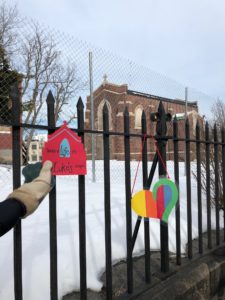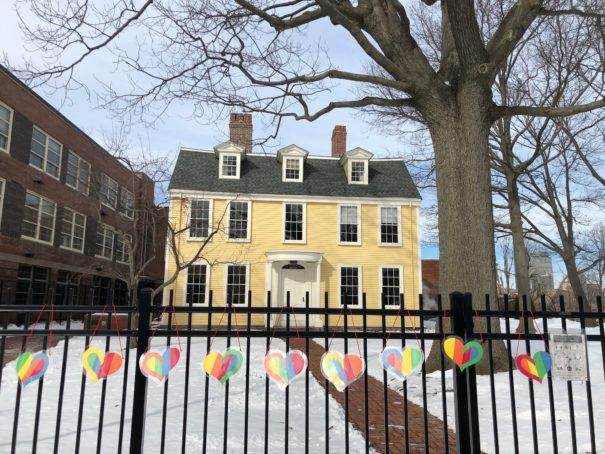
14 Feb 2021 Spreading the Love in Highland Park
What’s our favorite part of taking a Valentine’s Day stroll in a wintry Highland Park? You might have guessed it’s admiring all of the historic homes and places in one of the city’s most beloved neighborhoods. From Fort Hill Tower down to Roxbury Heritage Park, HBI’s office manager, Gabrielle Chapman spent a little extra time site-seeing with the Boston Preservation Alliance’s Young Advisors as part of an annual tradition started by the National Trust for Historic Preservation called Heartbombing, “the act of showering an older or historic place with tangible expressions of affection and devotion—preferably with lots of other place-lovers in tow.” See a selection of five stops on her trip, and let us know which buildings would have made your list this year!
Why Highland Park? Neighbors have been working to petition to get the neighborhood recognized as an Architectural Conservation District. See the website here: https://www.highlandparkacd.org/.
St. Luke’s Chapel – 149 Roxbury Street – The parish of St. Johns St. James is a collection of two buildings on the northern edge of Roxbury’s John Eliot Square: Ionic Hall and St. Luke’s Chapel. Ionic Hall is Roxbury’s oldest brick building, built between 1800-1804. The building was designed in the Federal Style by Captain Stoddard of Hingham as a home for his daughter, Sally Hammond. By 1876, the house had been purchased by the Episcopal Diocese of Massachusetts who had opened St. Luke’s Convalescent Home there. St. Luke’s Chapel, a Gothic Revival style chapel, was designed by Ralph Adams Cram and was constructed between 1893-1900. The structure is accented by a wooden reredos and cross decoration by the Boston-based wood carver Johannes Kirchmayer, a frequent Cram collaborator.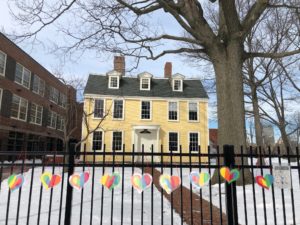
Dillaway Thomas House – 183 Roxbury Street – The Dillaway Thomas House is named for two occupants of the house: General John Thomas in 1776-1776 and Charles K Dillaway and family in 1835-1903. The Dillaway Thomas House is one of the few surviving examples of 18th century domestic architecture in Boston. It is 5 bays wide and two bays deep with a gambrel roof. The entrance is covered by a Federal style small rectangular portico supported by Doric columns, an early 1800’s addition. The Dillaway Thomas House is part of Roxbury Heritage State Park, operated by the Commonwealth Department of Conservation and Recreation/Division of Urban Parks and Recreation.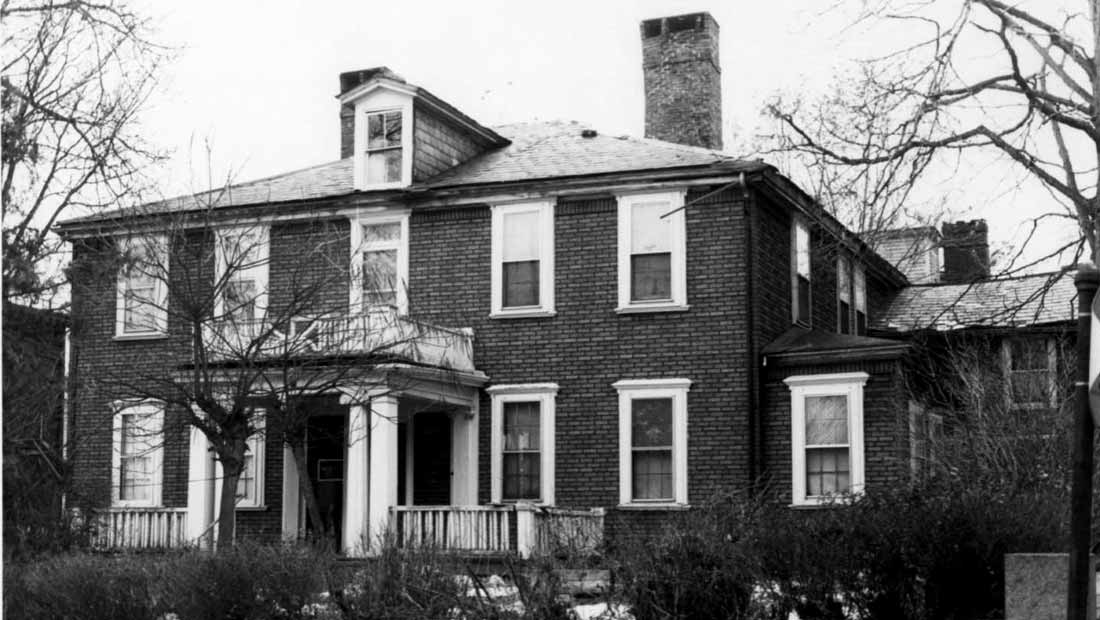
Spooner-Lambert House – 64 Bartlett Street – Built in 1782, the Spooner Lambert House is the third-oldest building in Roxbury. Constructed in the waning years of the American Revolution for Major John Jones Spooner, first commander of the Roxbury Artillery, the house occupies a pivotal location in the John Eliot Square National Register District. In 1983, after negotiations with the owner, HBI acquired a preservation restriction agreement on this 1782 house. HBI purchased the property in July 1992 after a foreclosure in the fall of 1990, and rehabilitated the house into four apartments. In 2000, HBI converted the units into condominiums and sold them to the occupants of the rental apartments who, today, steward the property under a preservation easement held by HBI.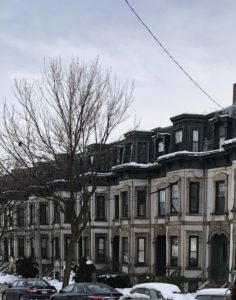
Marble Row Houses – 28-46 Cedar Street – The Cedar Street Marble Row Houses are a block of Second Empire marble row houses between Hawthorn Street and Thornton Street, built in 1871 on the eastern slope of Fort Hill. The three-story buildings are designed in pairs and have double entrances. The window frames are incised with floral tracery and decorated with pilasters and brackets under the sills. In the 1980s, HBI teamed up with Urban Edge and the Architectural Heritage foundation to restore the beautiful Cedar Street Marble Rowhouses. 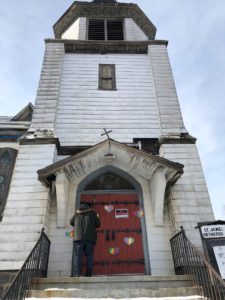
St. James African Orthodox Church – 50 Cedar Street – The church at 50 Cedar Street has been an icon in the Highland Park neighborhood since its construction on the corner of Cedar Street and Hawthorne Street in 1910. The 8000 square-foot wood frame building was designed by Bostonian architect Edward T. P. Graham, and was originally built for a Norwegian Evangelical congregation. In 1955, the church changed hands to the African Orthodox Church as the area became a concentrated center for African American residents.




